Ulnar Nerve Entrapment In Rock Climbers
You’ve made huge strides in your climbing ability since you touched that first hold a couple of years ago. Now, you’ve got your sights on the next grade, but you’ve hit a plateau. You decide to train 5-6 days a week to get stronger for climbing. You train hard –systems board, hang board, and weights, believing that this will get you past the plateau. But something strange begins to happen. You begin to notice a drop in your hang board times. It’s getting harder to get past that crux because your grip seems weaker. Then there’s that intermittent pain along the inside of your elbow that comes and goes. You ignore it -figure it’s one of those things that will resolve itself. A few weeks pass by and the pain is more intense than before, throbbing. You’re definitely feeling your grip get weaker. You’re barely able to send your warm-up. The elbow pain seems increasingly present, hurting during daily activities and is even affecting your sleep. You begin to question if you’ve reached your limit. Is the next grade even possible?
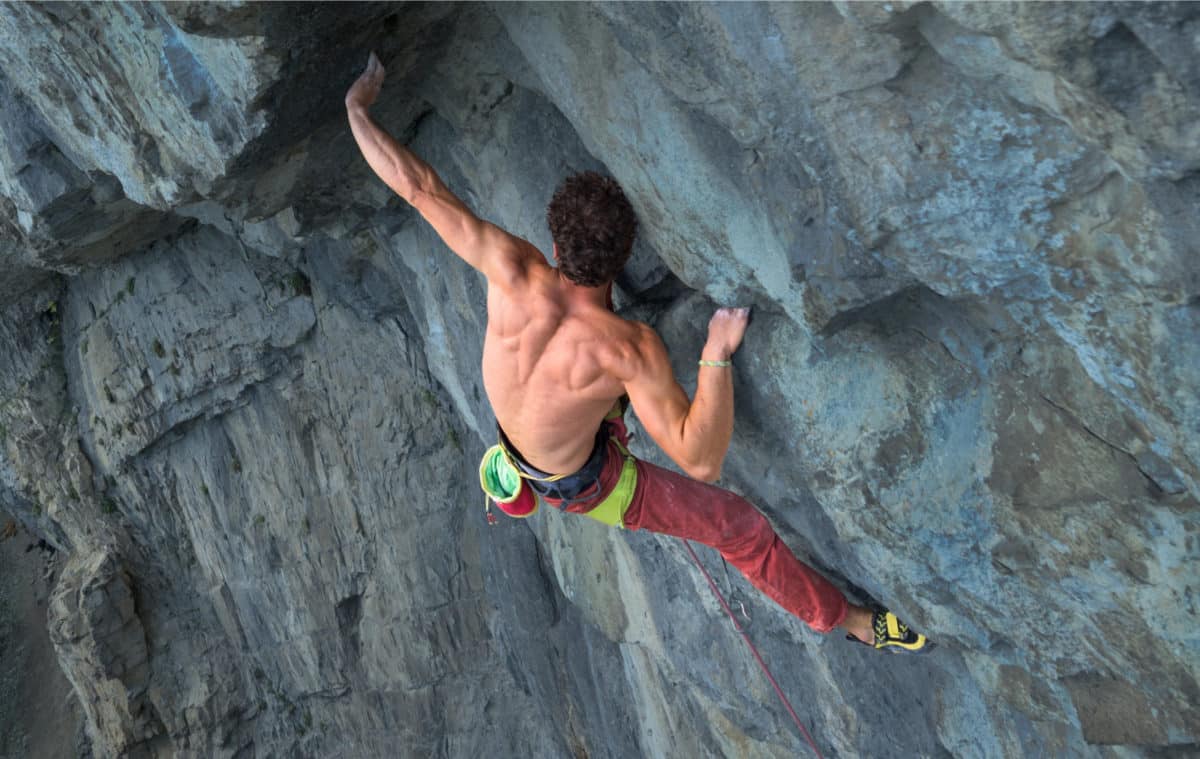
Signs and Symptoms
Nerves are important structures that basically help the brain communicate to the different muscles in the body. Without nerves, there’d be no way for you to send commands from the brain (i.e. hold on to that rock) to your grip muscles to be executed! Specific nerves innervate specific muscles or muscle groups, so that when a signal is conveyed to that nerve, only specific muscles get called into action. We’ll focus our discussion on the ulnar nerve. The ulnar nerve innervates many of your hand’s smaller muscles, some of the muscles in your thumb, and even muscles that have influence on how the wrist moves. This makes the ulnar nerve important in things like gripping!
Ulnar nerve compression occurs when our ulnar nerve gets irritated by its surrounding structures, primarily at the arcade of Struthers, which is a small canal where the ulnar nerve passes through in the elbow and/or the cubital tunnel, which is an area between the two heads of the flexor carpi ulnaris muscle. The nerve can also become irritated at the Guyon’s canal at the wrist or along other muscles that it travels through. The irritation is usually a result of overuse, either causing surrounding structures to encroach on the nerve or from direct irritation to the nerve. Some common signs of ulnar nerve compression are:
Throughout the Day
- Intermittent numbness and tingling in your ring and pinky finger
- Weakness with gripping activities
- Medial elbow pain
- In later stages, atrophy of some wrist and hand muscles may be observed
While climbing:
- It may be harder to hold onto climbing holds
- Increased pain may be experienced in the medial elbow as you try to grip harder
- Heaviness in the affected arm
Assessment
A comprehensive series of assessment techniques can be used to identify the source of the pathology. Often times, physical therapists will look for any noticeable muscle wasting in the hand, wrist or arm muscles on the affected side. An assessment for other signs such as decreased flexibility or strength in the affected side are also helpful clues. A very useful cluster of flexibility and strength tests known as the medial epicondylalgia test cluster (passive wrist extension, resisted wrist extension, resisted forearm pronation, palpation of flexor mass) can be used to differentiate whether the surrounding muscles or ulnar nerve is affected. Tinnel’s palpation (percussing) along the ulnar nerve and neurodynamic testing is also indicated to help determine the potential source of symptoms. It would also be a good idea to observe this person climbing to see if there are preferential movements patterns that may place excess demand on the nerve.
The Rock Rehab Pyramid
Now that you have learned more about your injury, you can now intervene with a systematic intervention program to help you manage your symptoms and ultimately get you back on the wall. In order to ensure a safe and pain free return back to rock climbing, we will be utilizing the Rock Rehab Pyramid developed by Dr. Jared Vagy and illustrated in his book Climb Injury-Free. The Rock Rehab Pyramid pyramid allows you to self-gauge your injury and when to progress to the next stage of recovery starting with the unloading phase moving to mobility, followed by strength and lastly the movement phase.
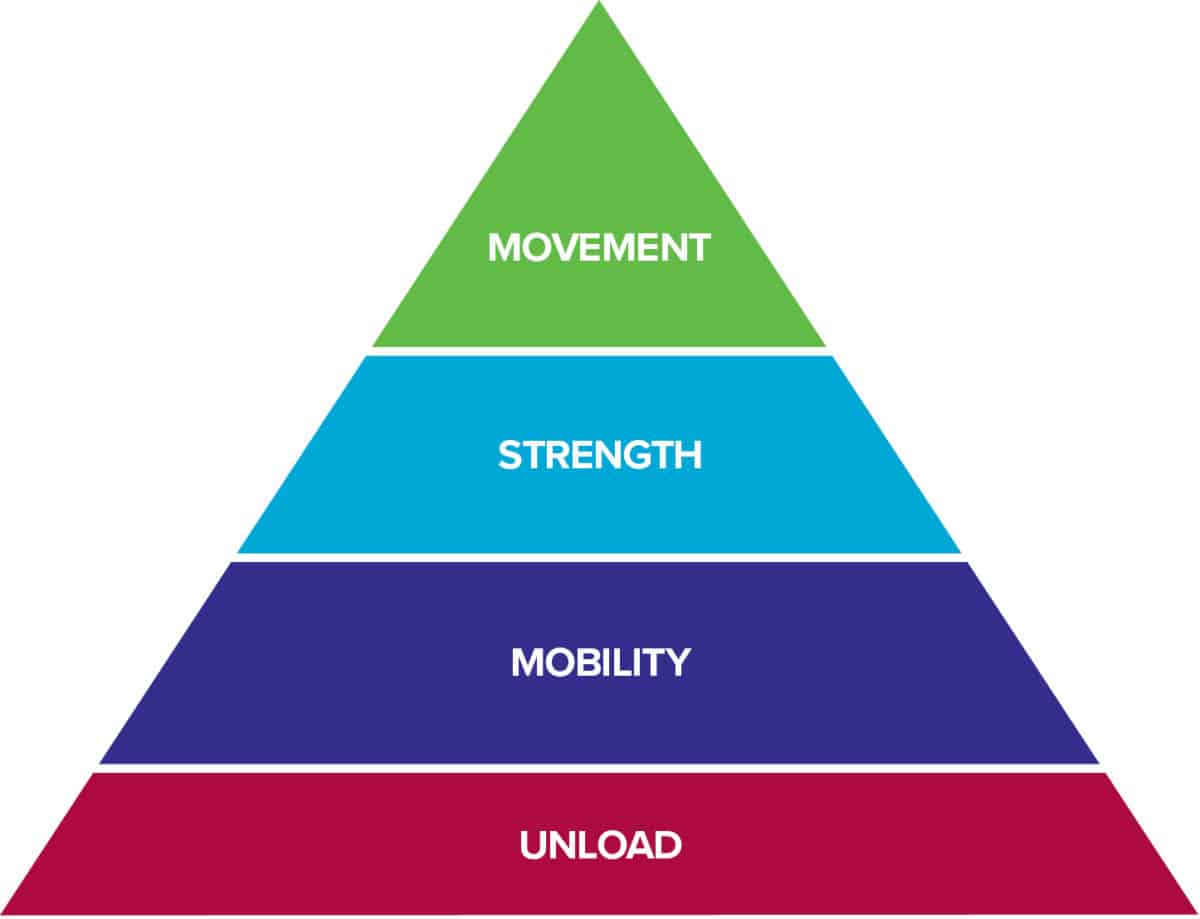
The bottom level of the pyramid aims to decrease Pain, Inflammation and Tissue Overload so that the tissues have the best healing environment. Often times, after an injury there is some sort of change in Mobility. After the tissues have calmed down from the previous level, this stage will look to reestablish normal, pain free range of motion. Once the injured area restores its mobility, it is time to increase the Strength of the surrounding muscles so that Movement in the following level can be coordinated and optimized. Click here to learn more about the rock rehab pyramid structure.
Unload exercises
- In an ideal world, trying to temporarily minimize elbow flexion beyond 50 degrees as much as possible in early stages of injury to offload the ulnar nerve; this doesn’t mean to avoid movement in general, but simply modifying movement
Mobility exercises
These exercises are a good starting point, just to encourage movement
Scalene Stretching (3x30s, 2-3x/day)
Ulnar Nerve Glides (3×12, 1-2x/ day)
Strength exercises
These are intended to help build capacity in some of the muscles required for climbing
Pronation and Supination
Bottoms Up Press
Pinch Grip Raises
Movement exercises
You will want to avoid climbing movements that put tension on the ulnar nerve such as gastons, belaying with a palm down, or pulling off of a thumbs down jam.
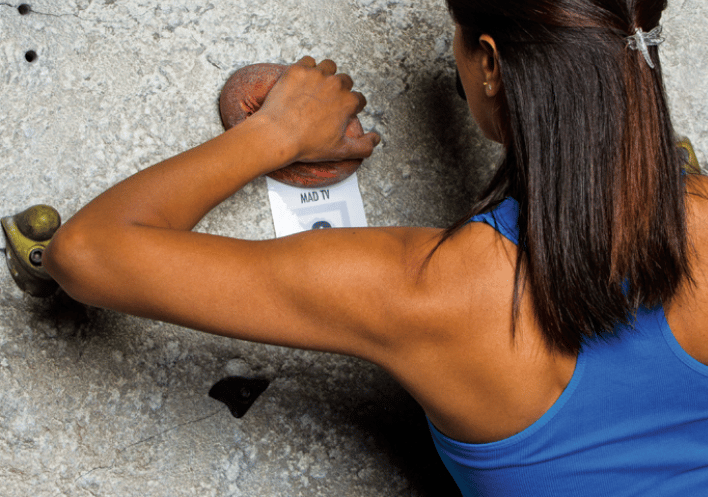
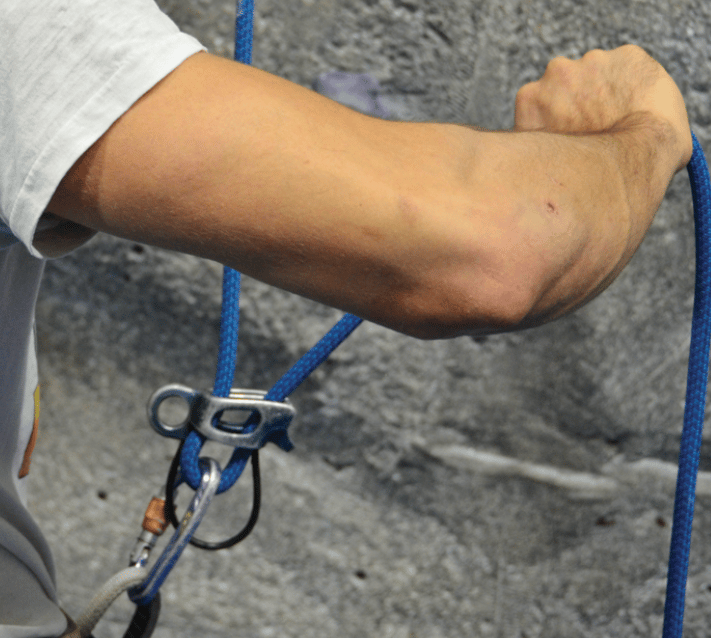
The Research
Boone S, Gelberman RH, Calfee RP. The Management of Cubital Tunnel Syndrome. J Hand Surg Am. 2015;40(9):1897-1904. doi:10.1016/j.jhsa.2015.03.011
This article was essentially a review of current management for cubital tunnel syndrome through nonsurgical and surgical means. It indicates that nonsurgical treatment is recommended for those experiencing mild to moderate cubital tunnel syndrome and recommends surgical intervention for progressively worse cases where muscular atrophy and sensation impairments are present. Nonsurgical treatment includes discontinuation of triceps strengthening exercises, avoiding direct pressure to medial aspect of elbow, keeping a resting elbow position of around 50 degrees, and using nighttime elbow orthosis to prevent flexion beyond 50 degrees. These indications are to allow the nerve to offload and heal. Progressive reloading should follow once inflammatory phase of tissue healing has passed.
For surgeries, there are 3 methods: simple decompression -where fascial structures superficial to the nerve are released, medial epicondylectomy -where a portion of the medial epicondyle is resected to create more space, and a nerve transposition -where the ulnar nerve itself is moved more anteriorly to reduce strain and compression on the nerve.
See a Medical Practitioner
It is important to note that this is not medical information. Please contact your doctor if you need medical attention.
About Me
Hello everyone! My name is Derrick -pleasure to meet you all.
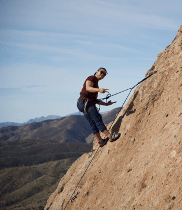
I grew up in Southern California and have a deep love for all things outdoors. I’m a former D1 collegiate rugby player and currently a Doctor of Physical Therapy student at the University of Southern California. I want to give back to the climbing community for all it has done for me. I want to share my growing knowledge of physical rehabilitation with people to help empower them to move!
- Disclaimer – The content here is designed for information & education purposes only and the content is not intended for medical advice.


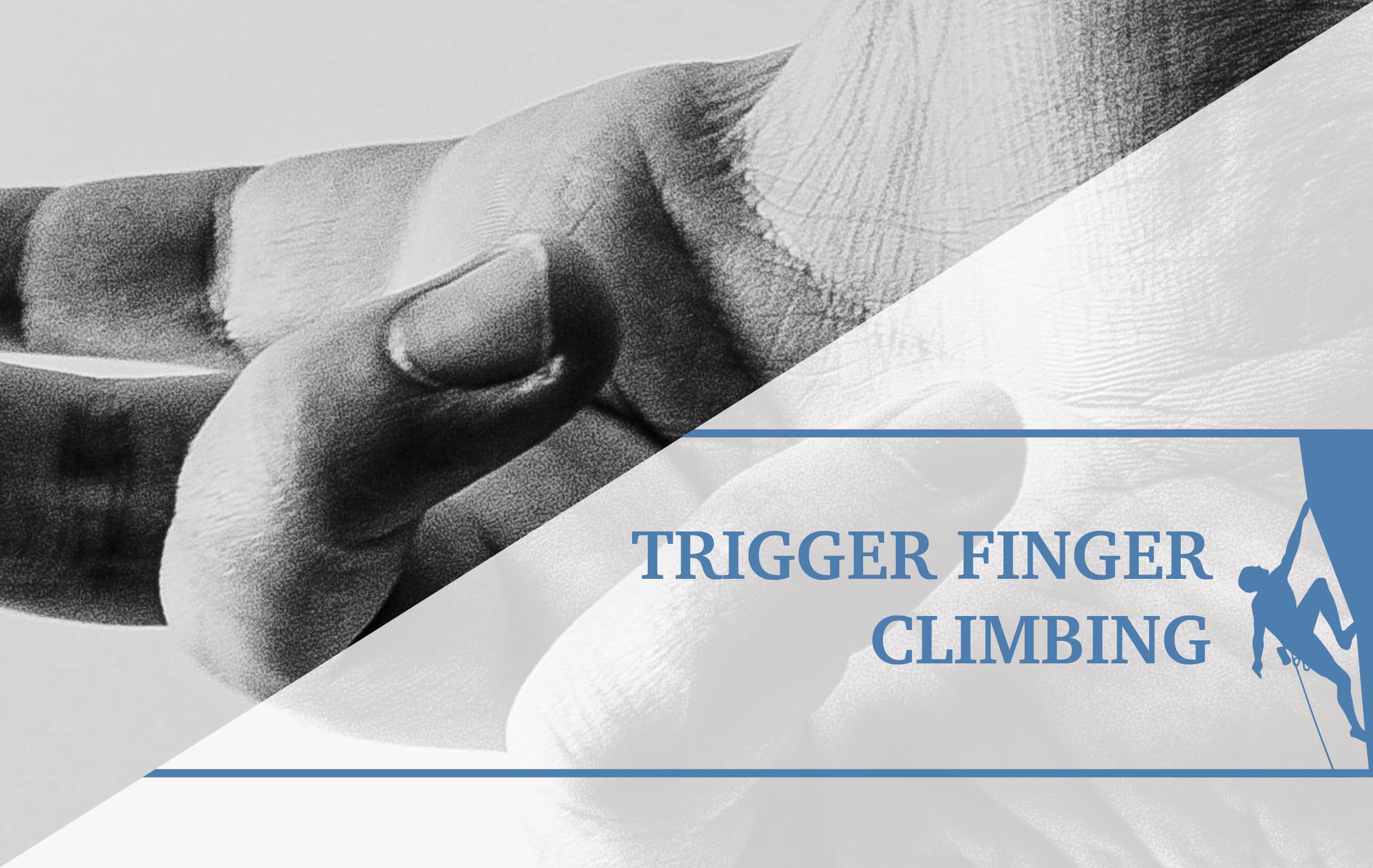
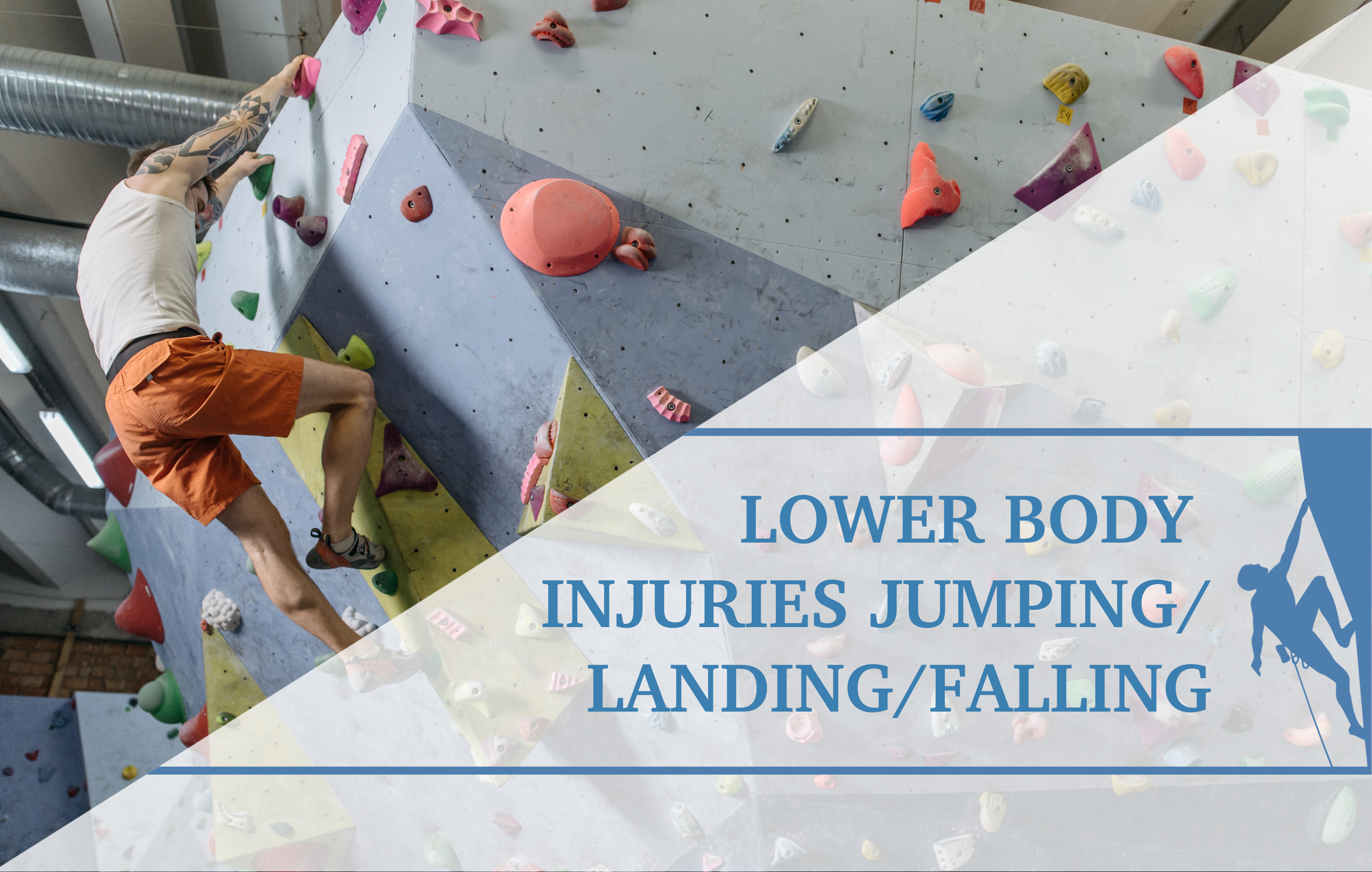
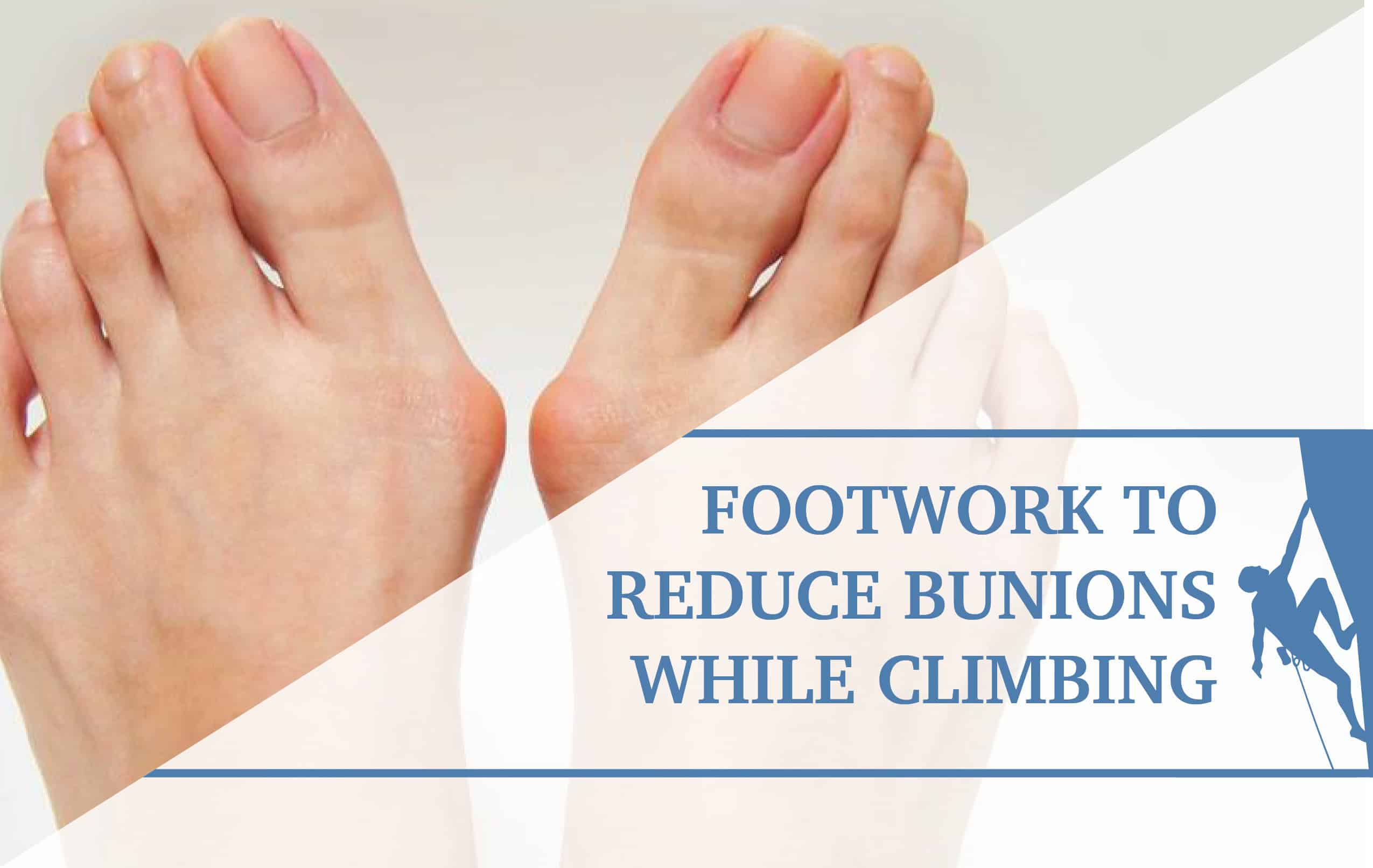
Had this before, the exersices worked. Now i’ve got it again after yesterdays session on a high gaston crux. Time to rehab bois.